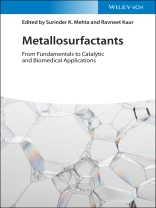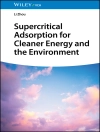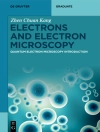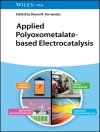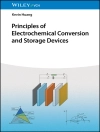Metallosurfactants
Provides up-to-date coverage of the synthesis, properties, and applications of metallosurfactants
Metallosurfactants: From Fundamentals to Catalytic and Biomedical Applications is a thorough introduction to amphiphilic compounds that allow to incorporate metal ions in the surfactant system. This comprehensive reference and guide describes the fundamentals of metal surfactant complexes, highlights recent advances in the field, and explores current and future applications and research areas. Gradually progressing from basic to advanced topics, the authors first explain the classification and characterization of metallosurfactants before delving into more complex concepts and various catalytic, sensing, and biomedical applications.
The book begins with coverage of the synthesis of metallosurfactants and their surface, interfacial, and aggregation behavior. Subsequent chapters discuss applications of metallosurfactants in areas such as drug delivery, molecular machines, transfection, nanoparticle synthesis, and carbon monoxide-releasing molecules (CORMs). Other topics include the use of metallosurfactants as catalysts in organic reactions, and as anticancer and antimicrobial agents in drug delivery and formulation. This unique reference
- Provides an overview of the structure-function relationship, synthesis methods, and characterization of metallosurfactants
- Reviews current trends in metallosurfactant development and research
- Examines the use of metallosurfactants in a wide range of reactions, including esterolytic reactions and hydrogen generation
- Discusses advanced applications of metallosurfactants, e.g. as nanoreactors for nanoparticle synthesis, non-viral transfection vectors, and sensors
Metallosurfactants: From Fundamentals to Catalytic and Biomedical Applications is an excellent introduction to the growing field of metallosurfactant chemistry as well as a concise, highly useful reference for researchers and scientists in both academia and industry.
Jadual kandungan
Preface xi
1 Metallosurfactants, a “Novel Portmanteau”: A Holistic Insight into the Structural–Physiognomies Relationships, Synthesis Stratagems, and Characterization 1
Ankush Parmar, Shilpee Sachar, and Shweta Sharma
1.1 Introduction 1
1.2 Intrinsic Physiognomies of Metallosurfactants 3
1.3 Classification of Metallosurfactants 6
1.4 Syntheses Stratagems and Characterization of Metallosurfactants 8
1.4.1 Metathesis Reaction 8
1.4.2 Ligand Substitution Reaction 9
1.4.3 Ligand Insertion Reaction 10
1.5 Conclusion 10
References 14
2 Metallosurfactants: A Surface and Interface Perspective 21
Ravneet Kaur, Neena Mehta, and Surinder K. Mehta
2.1 Introduction 21
2.2 Micellization and Surface Parameters 22
2.2.1 Thermodynamics of Micellization 23
2.2.2 Adsorption Parameters 24
2.3 Adsorption of Surfactant Monolayers 34
2.4 Conclusions 36
References 36
3 Metallosurfactant Self-Assembly: Structures and Chemistry of Interfacial, Biphasic, and Phase Transfer Catalysis 39
Ravneet Kaur and Aashima Sharma
3.1 Introduction 39
3.2 Self-Aggregation Behavior 40
3.2.1 Micelles 40
3.2.2 Inverted Micelles 44
3.2.3 Vesicles 46
3.2.4 Lamellar Phases 49
3.3 Chemistry of Catalysis 50
3.3.1 Micellar Catalysis 51
3.3.2 Vesicular Structures in Catalysis 53
3.3.3 Interfacial Catalysis 56
3.4 Conclusions 58
Acknowledgment 58
References 58
4 Hydrolytic Metallosurfactants: Nanocatalysts for Esterolytic Reactions 63
Bhanushree Gupta, Rahul Sharma, and Kallol K. Ghosh
4.1 Introduction 63
4.2 Metallosurfactants as Nanocatalyst for Esterolytic Reactions 64
4.3 Catalytic Hydrolysis of Carboxylate Esters 65
4.4 Catalytic Hydrolysis of Phosphate Esters 70
4.5 Quantitative Treatment of Observed Rates: Application of Kinetic Models 77
4.6 Conclusion 78
References 79
5 Metallosurfactants as Catalysts in Organic Reactions and Energy-Based Applications 83
Sakshi Goel and Supriya Rana
5.1 Introduction 83
5.2 Metallosurfactants as Catalysts in Organic Reactions 85
5.2.1 Types of Reactions 85
5.2.2 NHC Metallosurfactant-Catalyzed Reactions 88
5.2.3 Stimuli-Responsive Metallosurfactant-Catalyzed Reactions 89
5.2.4 Miscellaneous Reactions 90
5.3 Metallosurfactants as Catalyst in Water Oxidation 91
5.4 Light-Driven Hydrogen Generation 95
5.5 Conclusions 97
References 98
6 Metallosurfactants as Drug-Delivery Vehicles 103
Rohini Kanwar, Amit Kumar, Jyoti Rathee, and Surinder K. Mehta
6.1 Introduction 103
6.2 Distinct Assemblies of Metallosurfactants in Drug Delivery 105
6.2.1 Metallosomes as Drug-Delivery Agents 105
6.2.2 Metallosurfactants and Its Self-Assembled Structures as Nanovectors 107
6.2.3 Metallosurfactant Co-polymer-Based Micellar Systems for Drug Delivery 108
6.3 Metallosurfactants as MRI Contrast Agents 109
6.4 Conclusion 112
Acknowledgments 112
References 112
7 Metallosurfactants as Molecular Machines for the Preparation of Hybrid Silica-Based Porous Material 117
Rekha Bhar and Surinder K. Mehta
7.1 Introduction 117
7.2 Porous Silica-Based Materials 118
7.2.1 Molecular Machine 119
7.2.2 General Synthesis Procedure of Porous Silica Material 120
7.3 Different Types of Porous Silica-Based Material 121
7.3.1 Copper@Surfactants-Based Porous Material 121
7.3.2 Ruthenium@Surfactants-Based Porous Material 124
7.3.3 Cobalt@Surfactants-Based Porous Material 125
7.3.4 Iron@Surfactants-Based Porous Material 126
7.3.5 Other Metallosurfactant-Based Porous Material 128
7.4 Future Perspectives 129
7.5 Conclusion 130
References 130
8 Metallosurfactants as Non-viral Vectors in Transfection 135
Pilar López-Cornejo, José A. Lebrón, Francisco J. Ostos, Manuel López-López, María L. Moyá, Eva Bernal, and Carmen Martín
8.1 Introduction 135
8.2 Metallosurfactant Monomers 137
8.3 Metallomicelles 145
8.4 Metalloliposomes (Metallosomes) 147
8.5 Future Perspectives 151
Acknowledgments 151
References 151
9 Metallosurfactants as Nanoreactors for Nanoparticle Synthesis 159
Jaspreet Kaur, Rekha Bhar, Khushwinder Kaur, and Surinder K. Mehta
9.1 Introduction 159
9.2 Metallosurfactants as Reactors for Nanoparticle Synthesis 161
9.2.1 Colloidal Synthesis 161
9.2.2 Thermal Decomposition 168
9.2.3 Biphasic Redox Reaction 169
9.3 Future Perspective 173
9.4 Conclusion 174
Acknowledgments 174
References 174
10 Metallosurfactants and Their Biological Attributes: Anticancer and Antimicrobial Properties 179
Neha Jindal and Shivani Uppal
10.1 Introduction 179
10.2 Antimicrobial Activity 180
10.2.1 Metallosurfactants Effective against Bacteria 181
10.2.2 Metallosurfactants Effective Against Fungus 182
10.3 Anticancer Activity 185
10.3.1 Metallosurfactants Effective Against Breast Cancer 186
10.3.2 Metallosurfactants Effective Against Lung Cancer 189
10.4 Conclusion and Future Challenges 189
References 190
11 Metallosurfactants as Carbon Monoxide-Releasing Molecules 195
Maribel Marín-García, Núria Benseny-Cases, Mercedes Camacho, and Ramon Barnadas-Rodríguez
11.1 Why CO? 195
11.2 How to Deliver CO? 198
11.3 CO-releasing Metallosurfactants 202
11.3.1 Synthesis of Molybdenum-Based CORMs 204
11.3.2 Properties of Mixed CORAs Constituted by Molybdenum-Based Metallosurfactants and Phospholipids 205
11.4 Conclusions 208
Acknowledgments 208
References 208
12 Supramolecular Metal-Modified Nanocontainers Based on Amphiphilic and Hybrid Matrix: Self-Assembling Behavior and Practical Applications 223
Elena P. Zhiltsova, Marina R. Ibatullina, Ruslan R. Kashapov, Nadezda E. Kashapova, Albina Y. Ziganshina, Lucia Y. Zakharova, and Oleg G. Sinyashin
12.1 Introduction 223
12.2 Structure, Properties, and Biomedical Application of Metallosurfactants 224
12.3 Amphiphilic System Based on Metallosurfactants and Macrocycles 227
12.4 Nanocomposites Based on Amphiphilic Resorcinarenes and Metal Nanoparticles 235
12.5 Conclusions 239
Acknowledgments 240
References 241
13 Metallosurfactants in Nanoscale Molecular Containers as Sensors 249
Devika Vashisht and Nicole Pamme
13.1 Introduction 249
13.1.1 Metallosurfactants 249
13.2 Metallosurfactants as Nanosized Containers for Self-assembled Molecular Devices 251
13.3 Surfactant Aggregates in Chemical Detection 252
13.4 Self-Assembled Moieties as Fluorescent Sensors 253
13.5 Metallosurfactants and Detection Protocol 255
13.6 Conclusions 262
Acknowledgments 262
References 262
Index 265
Mengenai Pengarang
Surinder K. Mehta, Vice Chancellor, University of Ladakh, and Professor of Chemistry, Panjab University, Chandigarh, India. He has published more than 360 articles in international peer-reviewed journals and is the author of numerous books and book chapters. His research interests include metallosurfactant chemistry, nano electrochemical sensors, synthesis and application of semiconducting nanoparticles, colloidal chemistry, and nanodrug delivery systems.
Ravneet Kaur, Adjunct Professor of Chemistry and Physical Science, Ivytech Community College, Indiana, USA. She is the author of numerous scientific publications in the field of metallosurfactants chemistry and is a recipient of the All India UGC Postdoctoral Fellowship in Chemical Sciences at Panjab University, and a DAAD fellowship at Technical University Berlin, Germany, among several others.
